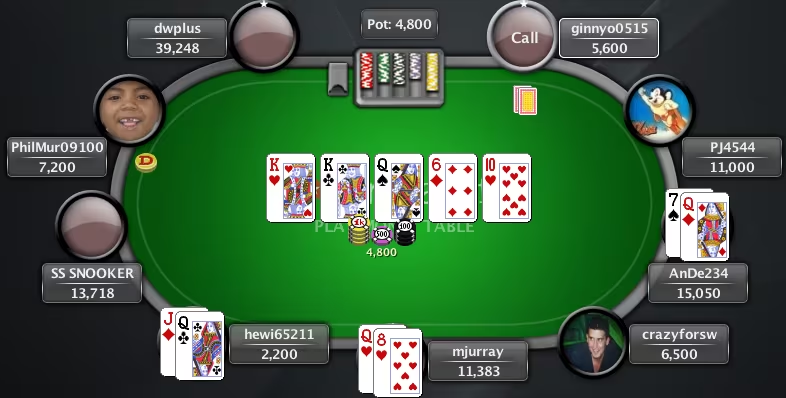Poker is one of the most popular card games worldwide, enjoyed by millions in casinos, online platforms, and home games. While often viewed as a game of skill, the element of chance plays a significant role in poker outcomes. This inherent randomness, combined with various psychological factors, can put players at risk for addiction.
I recently played a few hands of Texas Hold’em poker on PokerStars, a leading online poker platform. The experience reaffirmed how the thrill of the game can quickly pull you in. With each hand, there’s the tantalizing possibility that luck will swing your way, delivering that adrenaline-pumping “rush” of winning a big pot.

Poker’s addictive potential lies in its intermittent variable rewards schedule, a concept well-articulated in Schüll’s article “Addiction by Design”. Like slot machines, poker delivers unpredictable payouts at varying intervals. You might go several hands with mediocre results, but then hitting that one lucky draw to win a massive pot activates the brain’s reward circuitry, releasing dopamine and reinforcing the behavior. This is the same mechanism underlying gambling addiction.
What makes poker potentially more insidious than pure games of chance like slots or roulette is the illusion of control. Skilled professionals can certainly gain an edge, but for the vast majority of recreational players, outcomes are largely determined by luck in the short term. However, the strategic decision-making and psychological elements (e.g. bluffing) can lead players to attribute wins to their skill and losses to bad luck. This self-serving bias can fuel overconfidence and reckless betting behavior.
The social dynamics in poker can also contribute to addictive play. In my online session, the chat featured players bemoaning their “bad luck” and celebrating their “heaters” (lucky streaks). This can normalize risky behavior and instill a gambling “mindset” where players start to view luck as a personal attribute rather than a random variable. Poker forums are rife with posts of players convinced they’re “due” for a big win after a losing session, reflecting the gambler’s fallacy.

Poker sites utilize many of the same design tactics as slot machines to keep players engaged. Sensory feedback like bold graphics and satisfying sound effects accompany each win. The fast pace of online play allows players to get in far more hands than in live games. PokerStars even has a “quick deposit” button right on the table, making it all too easy to reload and chase losses. The digital environment is engineered to maximize time on device.
To be fair, reputable platforms like PokerStars do have some responsible gaming measures in place, like self-exclusion options and resources for problem gambling. And poker does differ from slots in that there is a skill component, and players are competing against each other rather than the house. But the fundamental risk of addiction is still present any time real money is on the line and chance is a key determinant of outcomes.
As game designers, I believe it’s critical to consider the potential for addiction when incorporating chance-based mechanics, especially when real money is involved. Drawing from Schüll’s insights, some red flags to watch out for are mechanics that encourage extended play, rapid feedback loops, and mentally disconnecting players from the value of their bets. Designers have a responsibility to implement robust responsible gaming features and avoid predatory tactics that exploit the allure of randomness.
Poker will likely endure as a beloved pastime, but it’s crucial for players to approach it with open eyes about the role of chance. Only by recognizing the grip that randomness can exert on our minds can we engage with such games in a healthy manner and avoid the pitfalls of addiction.



